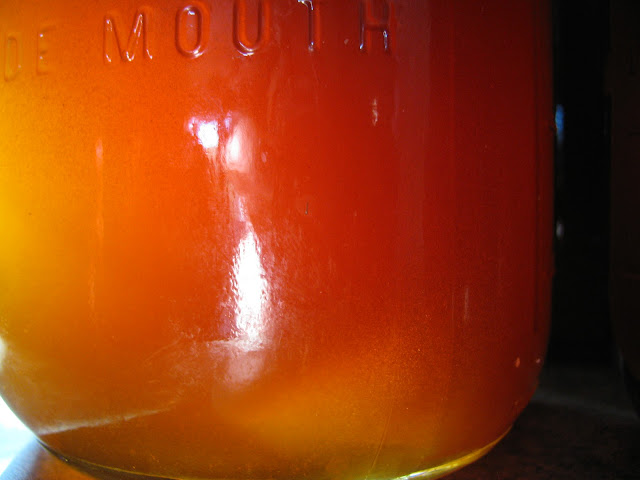The green hive on the right was the star this year, at one point supporting THREE active honey supers. And now it is dead.
There is a window during the late summer season when mite populations can explode in the hive. I was busy with other events in my life and didn't take care of the bees as I should, and they paid the price for my negligence. Lesson learned the hard way.
These are bees I pulled from brood cells for closer inspection. The culprit is Deformed Wing Virus, a disease transmitted by Varroa mites.
Here is a young bee exhibiting the classic symptoms of the disease - distorted, twisted wings. Compare them to the bee on the left.
What a sad realization. Do you see the queen? She is presiding over a hive with a death sentence. At this time of year, the bees developing within brood cells are the ones that will see the hive through the winter. There is no new generation of bees to sustain this colony.
 To make matters worse, this was also the time of year that yellowjackets were at their most vicious, tearing into colonies and killing bees. A weakened hive struggling with disease is an easy mark.
To make matters worse, this was also the time of year that yellowjackets were at their most vicious, tearing into colonies and killing bees. A weakened hive struggling with disease is an easy mark.Once I determined that this hive would not survive, I took off the honey super that was supposed to be their reserve for the winter and reduced the colony down to only two brood boxes.
A few days later I opened the hive to silence. Thousands of bees gone in a matter of days, and frame after frame of dead capped brood. Not a single bee, except this one. The queen was the sole survivor! With no attendants, she was struggling to stay alive.




















